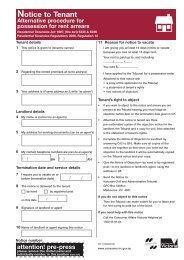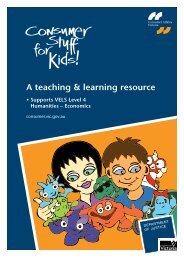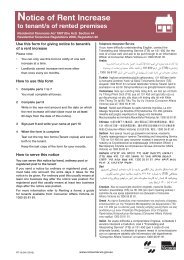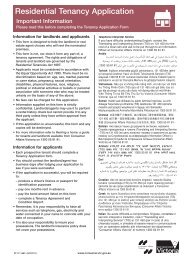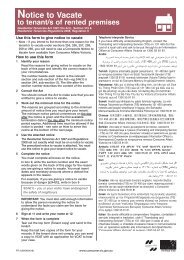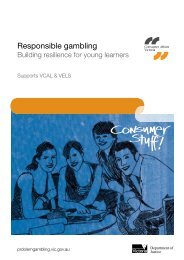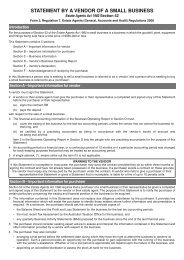A resource for teaching and learning about consuming planet earth
A resource for teaching and learning about consuming planet earth
A resource for teaching and learning about consuming planet earth
Create successful ePaper yourself
Turn your PDF publications into a flip-book with our unique Google optimized e-Paper software.
BCONTINUED<br />
SECTION B<br />
Buy ‘green’, save money<br />
1. Reduce can mean looking at options such as borrowing, renting, bartering or buying second<br />
h<strong>and</strong> as well as making choices more carefully so that you have less rubbish to get rid of<br />
eg. avoiding goods with excessive packaging.<br />
2. Reuse means to use a product more than once, rather than throwing it away after just one use<br />
eg. re-using glass jars.<br />
3. Recycle means to take a waste item back to a manufacturing process so that it can be remade<br />
into either the same product or something different eg. plastic waste being made into park<br />
benches <strong>and</strong> fleecy clothing.<br />
Recycling in Victoria<br />
Each year household recycling in Victoria saves:<br />
– 8 960 mega litres of water – the consumption of 3 370 000 people <strong>for</strong> one week<br />
– 309 964 tonnes of greenhouse gasses – equivalent to taking 51 661 cars off the road<br />
<strong>for</strong> a year (source: www.sustainability.vic.gov.au).<br />
A cost/benefit analysis on kerbside recycling in 2001 <strong>for</strong> the National Packaging Covenant<br />
Council estimated the costs of Australian local government kerbside recycling (collections,<br />
sorting <strong>and</strong> delivery). For metropolitan areas these ranged from 70cents - $1.15 per household<br />
per week, with higher costs in country areas. The report found there was a net environmental<br />
benefit of $424 million after allowing <strong>for</strong> all the costs involved.<br />
Energy rating labels<br />
Most of our consumer decisions involve some sort of cost/benefit analysis.<br />
Many environmental costs are not presently included in the final market price of goods <strong>and</strong><br />
services so it can be hard <strong>for</strong> consumers to make in<strong>for</strong>med decisions. However, the introduction<br />
of energy rating labels in recent years has given consumers much more in<strong>for</strong>mation <strong>and</strong> a greater<br />
underst<strong>and</strong>ing of the environment costs involved when purchasing home appliances.<br />
Well-in<strong>for</strong>med ‘green’ consumers underst<strong>and</strong> that saving energy is good <strong>for</strong> the <strong>planet</strong> as well<br />
as their wallet!<br />
– Using energy efficiently is the best way to reduce energy bills <strong>and</strong> environmental impacts.<br />
Electrical appliances account <strong>for</strong> <strong>about</strong> 25 percent of household energy use.<br />
– It is important to buy the right size: a large model will use more energy. The energy label<br />
will provide in<strong>for</strong>mation on the number of kWh used per year.<br />
– Appliances should not be used unnecessarily, <strong>for</strong> example, putting small loads in the<br />
dishwasher, washing machine <strong>and</strong> dryer.<br />
– Maintaining appliances according to the manufacturer’s instructions means they will last<br />
longer – saving money <strong>and</strong> <strong>resource</strong>s.<br />
– St<strong>and</strong>-by energy is drawn when some electrical equipment is not actually being used, such<br />
as when the television is turned off with the remote control, but not the switch on the set<br />
or at the wall. St<strong>and</strong>-by energy can account <strong>for</strong> around 12 percent of energy costs in a home.<br />
– Some solutions cost little or nothing at all eg. deciding to reduce shower time in the morning.<br />
Consumers can often choose the wrong option, both <strong>for</strong> their wallet <strong>and</strong> the environment,<br />
because they have not had all the in<strong>for</strong>mation they needed be<strong>for</strong>e making a purchase. The<br />
average annual energy bill <strong>for</strong> an Australian household is around $1 300 a year <strong>and</strong> it is possible<br />
to make substantial savings with some research.<br />
consumer affairs victoria<br />
31<br />
Need consumer help? 1300 55 81 81 www.consumer.vic.gov.au



